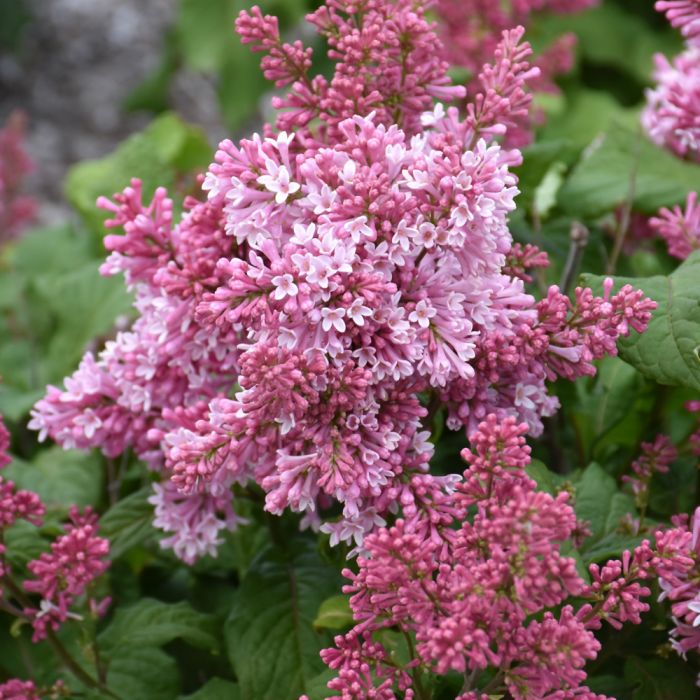Syringa, Preston Lilac 'First Editions® Pinktini™'




Out of stock
Coming soon, still growing- Sun Preference
- Full-Sun
Description
A compact, non-suckering lilac with large, fluffy pink flower clusters. Very good disease resistance.
Minnesota's Largest Selection of Shrubs
Elevate your landscaping with Gertens' unmatched variety of shrubs! Selecting the right shrubs for your backyard can enhance its beauty and functionality. Consider factors like sunlight, soil type, and mature size when choosing shrubs. For sunny areas, flowering shrubs like roses or hydrangeas can add color and charm. In shady spots, opt for shrubs like azaleas or hostas. Evergreen shrubs provide year-round interest and privacy, while deciduous shrubs offer seasonal color changes. At Gertens, we offer a wide selection of shrubs to suit every backyard need.
Details
First Editions® Pinktini™ Lilac | Syringa x prestoniae 'Jeftin'
Height: 5 feet
Spread: 4 feet
Sunlight: full sun
Hardiness Zone: 2a
Group/Class: Preston Lilac
Brand: Jeffries Nurseries
Description:
An outstanding dwarf lilac absolutely smothered in upright panicles of fragrant bright pink flowers in late spring; multi-stemmed and very compact growing, an ideal garden size, lovely in groupings; full sun and well-drained soil; non-suckering
Ornamental Features
First Editions® Pinktini™ Lilac features showy panicles of lightly-scented pink flowers rising above the foliage in late spring, which emerge from distinctive rose flower buds. It has forest green deciduous foliage. The pointy leaves turn buttery yellow in fall.
Landscape Attributes
First Editions® Pinktini™ Lilac is a multi-stemmed deciduous shrub with an upright spreading habit of growth. Its relatively coarse texture can be used to stand it apart from other landscape plants with finer foliage.
This is a relatively low maintenance shrub, and should only be pruned after flowering to avoid removing any of the current season's flowers. It is a good choice for attracting butterflies to your yard. It has no significant negative characteristics.
First Editions® Pinktini™ Lilac is recommended for the following landscape applications;
- Accent
- Mass Planting
- Hedges/Screening
- General Garden Use
- Planting & Growing
First Editions® Pinktini™ Lilac will grow to be about 5 feet tall at maturity, with a spread of 4 feet. It tends to be a little leggy, with a typical clearance of 1 foot from the ground, and is suitable for planting under power lines. It grows at a medium rate, and under ideal conditions can be expected to live for approximately 30 years.
This shrub should only be grown in full sunlight. It is very adaptable to both dry and moist locations, and should do just fine under average home landscape conditions. It is not particular as to soil type or pH. It is highly tolerant of urban pollution and will even thrive in inner city environments. This particular variety is an interspecific hybrid.
More Information
| Gerten Grown Plants | Gerten Grown Plants |
|---|---|
| Available for Pre-Order | No |
| Sun Preference | Full-Sun |
| Mature Height (Range) | 5 - 10 feet |
| USDA Hardiness Zone | 3, 4, 5, 6, 7 |
| Common Family Name | Lilac |


